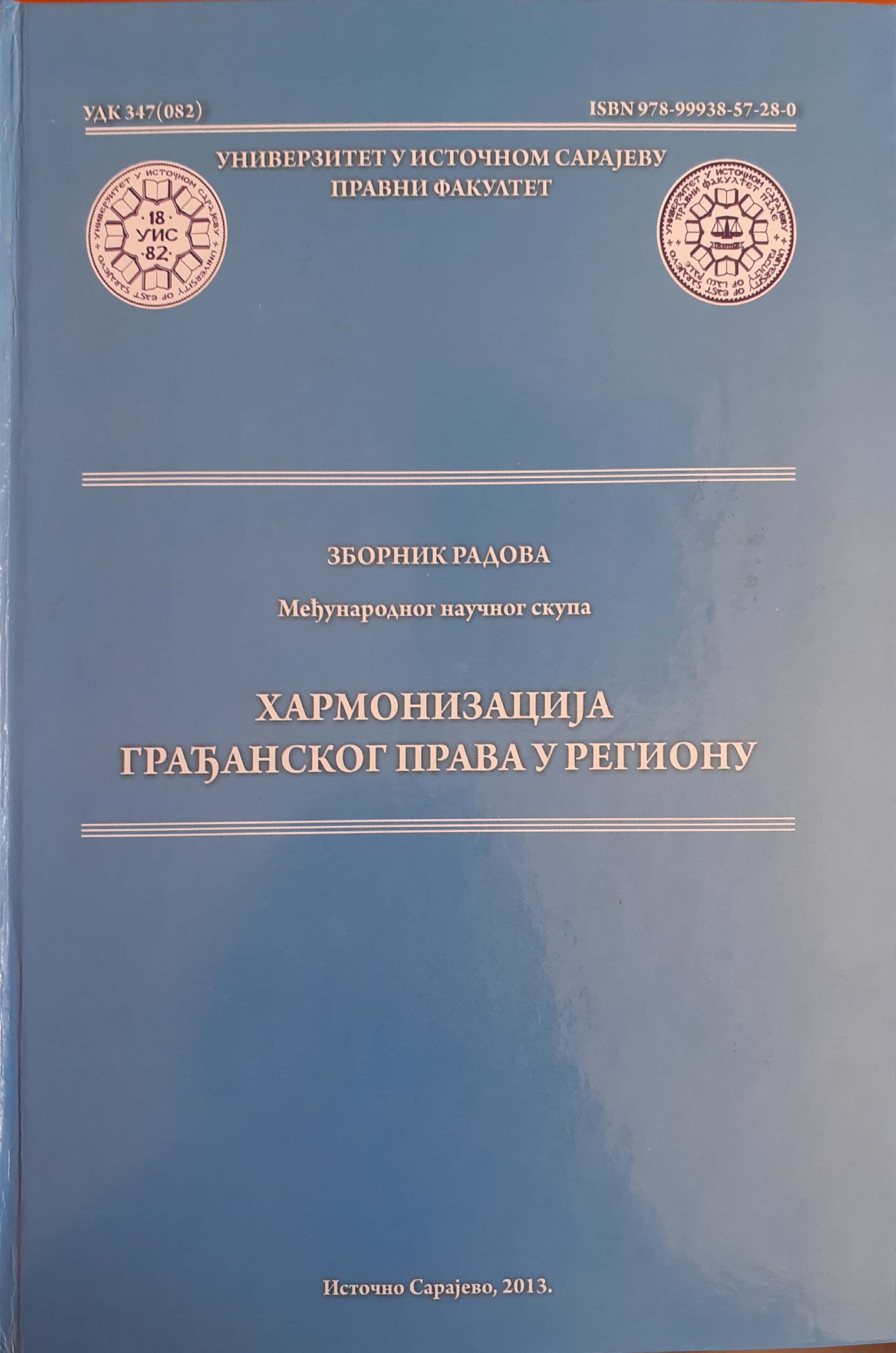Грађанско право на војвођанском правном подручју у Краљевини Срба, Хрвата и Словенаца
Civil Law in the Territory of Vojvodina in the Kingdom of Serbs, Croats and Slovenes
Author(s): Gordana Drakić
Subject(s): Civil Law
Published by: Правни факултет Универзитета у Источном Сарајеву
Keywords: The Kingdom of Serbs, Croats and Slovens;Legal particularism;Unification of law;Territory of Vojvodina;Civil law;Marital law;
Summary/Abstract: From the very beginnings of the Kingdom of Serbs, Croats and Slovenes one of the most outstanding problems in the state that had to be solved was legal particularism. The common state of Serbs, Croats and Slovenes was composed of six different legal territories. It was necessary to adopt new uniform laws in various areas of state life. The special shortened procedure for equating of the law was prescribed by the St. Vitus’ Day (Vidovdan) Constitution. In this procedure the Legislative Committee of the National Assembly had a prominent role.The Kingdom of Serbs, Croats and Slovenes was a state with six different systems of civil law in force in its territory. Existence and application of different legal regulations in the unitary state caused significant problems in practice and everyday life. Nor was there any uniformity in the validity of legislation in the territory of Vojvodina either. In the prevailing part of Vojvodina there was in effect the Hungarian Marital Law Act from 1894 by which civil marriage was introduced and religious differences were abolished as an impediment for marriage. The period from 1918 to 1929 in the history of Kingdom of Serbs, Croats and Slovenes was marked by numerous political and parliamentary crises that had a negative impact on the legislative work of the National Assembly. Also different socio-political circumstances rendered the legislative work in the first ten years of the existence of the Kingdom of Serbs, Croats and Slovenes inert and without more success.
- Page Range: 107-118
- Page Count: 12
- Publication Year: 2013
- Language: Serbian
- Content File-PDF

